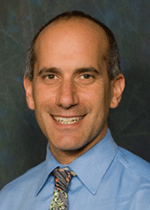How to Respond to an Opiate Overdose
08/05/2016
There’s no doubt that opioid addiction is a major epidemic. As the medical director of an Emergency Department, I don’t even need to reference the startling state and national statistics to know that I’ve witnessed, firsthand, the sharp rise in drug addiction and opiate related overdoses and deaths.
The causes of this epidemic are complex and combatting it isn’t going to happen overnight. In the meantime, however, there are simple steps that everyone can do that can help save lives. In this brief article I’ll share some basic information about how to identify when someone has overdosed, what you can do to help, and the laws that protect both the overdose victim and the person providing assistance from prosecution.
Opioids are a powerful class of drugs that include illegal narcotics like heroin as well as prescription painkillers like fentanyl, oxycodone and hydrocodone. Naloxone, also known by the brand names Narcan or EVZIO, is a drug that acts as an antidote for an opiate overdose and has become a critical tool in preventing overdose deaths.
In Connecticut, specially trained and certified pharmacists can prescribe and dispense naloxone right at the pharmacy so that you can have it available in case of an overdose. You can find a list of prescribing pharmacists online at data.ct.gov. Naloxone can be prescribed by physicians and other medical providers as well.
What to Look For
Symptoms of an opioid overdose include:
- Very slow, shallow or erratic breathing, or breathing has stopped completely
- Slow, erratic or no pulse
- Choking or snore-like gurgling noise
- Vomiting
- Limp body, blue fingernails and lips or blue or ashen skin
- Loss of consciousness or unresponsiveness to outside stimuli
What to Do
If someone has overdosed on an opioid drug:
- First turn the patient on their side.
- Call 911 for emergency medical assistance
- If you have naloxone available administer it according to the instructions provided
- If the person isn’t breathing, begin rescue breathing measures – tilt the person’s head back, lift the chin and pinch the nose, then give two quick breaths followed by one slow breath every five seconds until they start breathing on their own or help arrives
- Stay with the person until emergency medical services arrive
What to Know
Good Samaritan laws offer the following immunity:
- Connecticut law protects people seeking emergency medical care for an overdose from being arrested for possession of drugs or drug paraphernalia
- A person who administers naloxone in response to an overdose is also protected from civil liability and criminal prosecution
Dr. Steven Wexler is Medical Director of the Emergency Department at Day Kimball Hospital.

